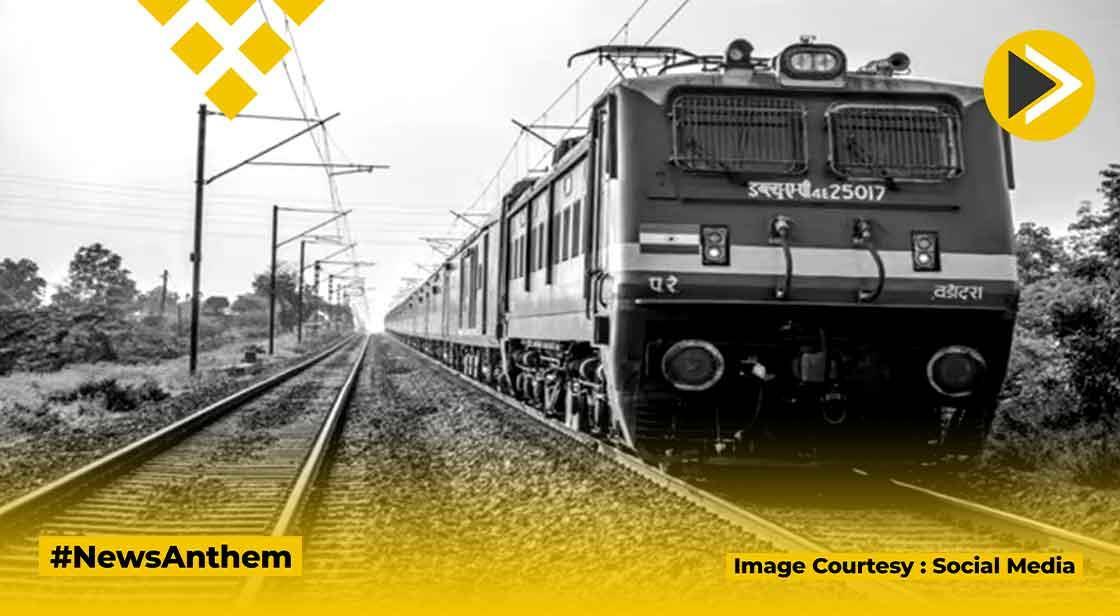Indian Railways Launches New Initiative to Link Satellite Cities to Connecting Railway Stations

News Synopsis
Indian Railways' New Initiative to Enhance Passenger Experience
Good news for rail passengers! Indian Railways has taken a significant step towards better planning of train journeys by introducing a new initiative that connects satellite cities to connecting railway stations all across the country.
This strategic move is aimed at personalizing the passenger experience during ticket booking through the IRCTC website and mobile application, providing greater ease of communication in cases of operational changes.
Objectives of the Initiative
The primary objective of this new initiative, launched on July 21, 2023, is to enhance the passenger experience during the ticket booking process. By linking satellite cities to connecting railway stations, the railways aim to offer passengers a seamless and efficient journey planning experience.
Notably, the new system will automatically display alternative stations in the journey planner and electronic reservation slip in the event of any operational or maintenance-related changes. Previously, this task was performed manually, leading to potential confusion for passengers.
List of Mapped Stations
Currently, the Indian Railways has successfully linked 175 cities with 725 railway stations nationwide. This essential information will be readily available on the journey planner and electronic reservation slip of the ticket, making it easier for passengers to identify the nearest stations to their desired destinations.
Here are a few examples of linked stations and their respective satellite cities:
-
Ahmedabad: Ambli Road, Asarva Junction, Chandkheda Road, Chandlodiya, Gandhigram, Gandhinagar Cap, Maninagar, Sardargram, Sarkhej, Vastrapur, and Sabarmati BG.
-
Banaras: Varanasi City, Varanasi Junction, Dilwa, Banaras, Raja Talab, and Sarnath.
-
Lucknow: Alamnagar, Aishbagh, Bakshi Ka Talab, Badshahnagar, Daliganj, Lucknow City, Lucknow NE, Lucknow NR, Mohibullapur, Gomati Nagar, and Manak Nagar.
-
Jharsuguda: Belpahar, Brajrajnagar, Brundamal, Jharsuguda Junction, Lapanga, and Jharsuguda Road.
-
Sambalpur: Hirakud, Sambalpur, Sambalpur Road, and Sambalpur City.
-
Bhubaneshwar: Bhubaneshwar, Bani Bihar, Barang, Lingaraj TMP Road, and Mancheswar.
Benefits for Passengers
The new initiative introduced by Indian Railways promises several benefits for rail commuters. Firstly, it will significantly enhance the convenience of tourists, as the initiative includes mapping places of tourist importance, such as Kedarnath, Badrinath, Vaishnodevi, and others, to the nearest railway stations. This feature will undoubtedly simplify the journey planning process for travelers, eliminating any potential confusion.
Furthermore, the integrated system linking satellite cities to connecting railway stations will ensure a personalized and smooth ticket booking experience through the IRCTC website and mobile application.
In case of operational changes, passengers will be promptly provided with alternative station options, mitigating any inconveniences that might arise.
Simplifying Rail Travel for Tourists and Commuters Alike
In conclusion, Indian Railways' new initiative to connect satellite cities with connecting railway stations marks a crucial step towards enhancing the overall passenger experience. By providing seamless ticket booking, alternative station options, and easy access to tourist destinations, this initiative aims to simplify rail travel for both tourists and regular commuters.
With this innovative approach, Indian Railways is taking a significant stride towards improved planning and efficiency in train journeys across the nation.
Here are some relevant and latest facts about the Indian Railways' new initiative to link satellite cities to connecting railway stations:
-
The initiative was launched on July 21, 2023.
-
175 cities have been linked with 725 railway stations under the initiative.
-
Passengers can now search for a station by its popular name, such as "Banaras" instead of "Varanasi Junction," or "Manak Nagar" instead of "Lucknow City."
-
The journey planner will also show alternate stations in case of a change in the scheduled station due to operational reasons.
-
The initiative is expected to be particularly beneficial for tourists, as it will make it easier for them to find the nearest railway station to their destination.
-
It will also be helpful for commuters who live in satellite cities and need to travel to the main city by train.
Here are some additional facts about the initiative:
-
The initiative was developed in response to feedback from passengers who found it difficult to identify small stations with popular areas or cities.
-
The initiative is part of the Indian Railways' ongoing efforts to improve passenger convenience.
-
The initiative is expected to save passengers time and money by making it easier for them to plan their train journeys.
Conclusion,
Indian Railways' recent initiative to link satellite cities to connecting railway stations is a commendable step towards improving the overall passenger experience and ticket booking process. With the integration of 175 cities and 725 railway stations nationwide, this innovative approach will undoubtedly benefit both tourists and regular commuters.
The primary objectives of this initiative include enhancing personalized journey planning, easing the search for stations near tourist destinations, and providing alternative station options in case of operational changes. By automating the display of alternate stations on the journey planner and electronic reservation slips, Indian Railways ensures a smooth and hassle-free travel experience for its passengers.
Tourists will particularly find this initiative helpful as it maps places of tourist importance, such as Kedarnath, Badrinath, and Vaishnodevi, to the nearest railway stations. This feature will simplify the process of planning their trips and reduce confusion during their travel.
Moreover, the integration of satellite cities with connecting railway stations will result in greater ease of communication in cases of station changes due to operational or maintenance reasons. This real-time information will prevent inconvenience for passengers and allow them to plan their journeys more efficiently.
You May Like









